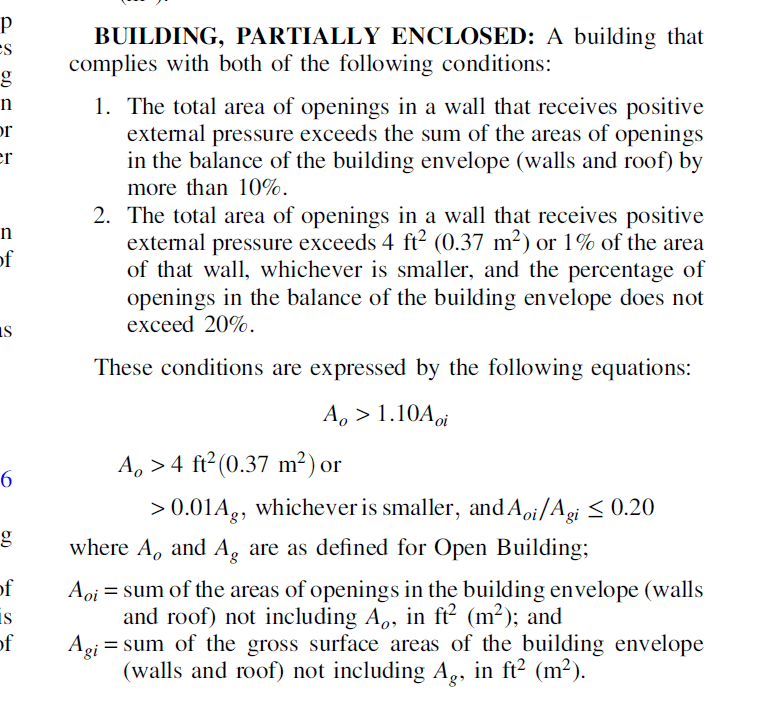Ron247
Structural
- Jan 18, 2019
- 1,052
Is the Enclosure Classification (Open, Enclosed, Partially Open, Partially Enclosed) a single designation for the entire structure or can it be a separate designation for each of the 4 directions? I had a similar question weeks back about the topographic factor (Kzt ) and everyone pretty much agreed it can be a different value for each direction. I was curious if the Enclosure is similar or not.

